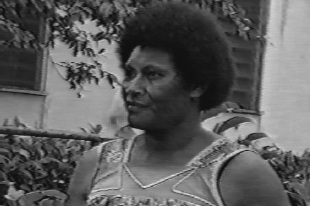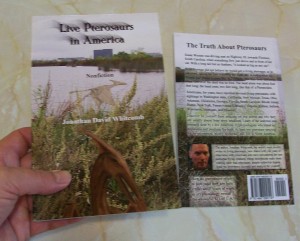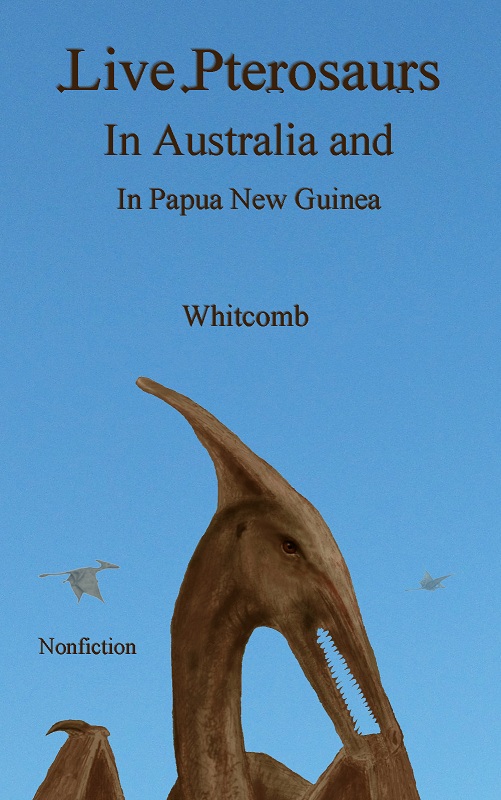In the non-fiction cryptozoology book Searching for Ropens, we read of the apparent attempted grave robbery by a ropen:
Eunice, a school teacher’s wife, described to [the American visitor] Carl Baugh an attempted grave robbery. One night, in April of 1993, near the northwest coast of Umboi Island, after a large funeral procession arrived at the burial location, a creature with a glowing red tail came from the sea. (The tail was described like the glow from burning embers.) About two hundred mourners were awake when the creature flew overhead.

Eunice witnessed the ropen with the glowing red tail
From the same book, we read of Jonathan Ragu’s sighting, in that same general area of Umboi Island:
Guessman interviewed Jonathan Ragu, of Mararamu Village, who saw a ropen in July of 2004, when he and his daughter were at a beach. Between 7:30 and 8:00 p.m., with a crescent moon and good visibility, it flew away from the northwest coast of Umboi Island, heading toward Tolokiwa Island . . . Glowing brightly red and white from the head and trailing edges of the wings, it flew fast, at tree-top level. The villager held out his hand from the wall of the building; Guessman estimated the distance: nose-to-tail length was eleven feet. From thirty-four silhouettes of bats, birds, and pterosaurs, Ragu chose the Sordes pilosus, a Rhamphorhynchoid pterosaur.
One recent reader of the third edition of my nonfiction cryptozoology book Live Pterosaurs in America was surprised at reports suggesting some modern pterosaurs are bioluminescent. He did not expect that.
Bioluminescent Pterosaurs in America
Glowing “pterodactyls?” In North America? Non-extinct? What could be more strange? Before dismissing the idea, consider some eyewitness sightings in North America . . .
Ropen Light Sighting by Evelyn Cheesman
A British biologist wrote extensively about her expeditions and discoveries in New Guinea, in the 1930’s. In her nonfiction book The Two Roads of Papua, she describes her encounters with the flying lights.
Two Glowing Pterosaurs in the Caribbean
The lady [one member of a small group on a cruise in the Caribbean] told me, “. . . Off in the distance were two very, very large, pink/orange flourescent birds flying behind each other. They looked like the flying dinosaurs, I forget what they are called. They would fly towards the ship, then back out to sea, then fly together in tandum then make a sharp right, away from the ship and disappear into the night. Then they would return. We witnessed this activity for about fifteen minutes.”
.

Live Pterosaurs in America (third edition)
.



